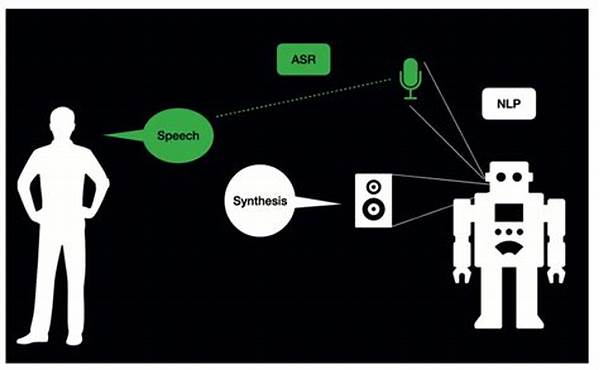Hey there, tech enthusiasts and curious minds! Today, we’re diving into the fascinating world of speech recognition and synthesis technology. It’s hard to imagine, but we’re living in a time when talking to our devices and having them understand and respond in meaningful ways has become part of our daily lives. Buckle up, because this ride through the realms of AI and machine learning is about to get exciting!
The Magic Behind Voice Tech
Speech recognition and synthesis technology is essentially the wizardry that allows your gadgets to understand the words you speak and then talk back to you. Picture this: you’re sitting at home, feeling too lazy to type your favorite song into a search bar. What do you do? You speak it! That’s speech recognition in action, an advanced form of AI interpreting your words.
On the flip side of this technology, we have speech synthesis. This is the bit where your device talks back to you, whether it’s reading a text aloud or delivering directions while you’re on a road trip. Speech synthesis transforms written text into human-like speech, making our interactions with machines more natural and seamless. The combination of these two technologies is reshaping how we communicate and access information, making our devices not just tools but engaging conversational partners.
Everyday Applications of Speech Tech
Speech recognition and synthesis technology have become part of our everyday lives in more ways than you might think:
1. Digital Assistants: Your friendly virtual assistant like Siri or Google Assistant uses speech recognition to interact with you.
2. Navigation: Ever been guided through traffic by a pleasant, disembodied voice? Thank speech synthesis for your hassle-free journey.
3. Accessibility: For those with visual impairments, text-to-speech and voice recognition offer independence and greater access to digital information.
4. Language Translation: Speech translation apps break language barriers instantly during travel or work communications.
5. Smart Homes: From turning on lights to setting your thermostat, smart home devices use speech recognition to make life easier and more convenient.
How It Works: Under the Hood of Speech Tech
So, how does speech recognition and synthesis technology actually work? At the heart of speech recognition lies a complex mix of algorithms that process and interpret your spoken words. These systems use deep learning models to distinguish sounds and match them with corresponding words and phrases in large databases.
Meanwhile, speech synthesis technology employs text-to-speech algorithms that map written words to linguistic rules, teaching machines how to produce sounds similar to human speech. Advanced neural network models are used to generate voices that sound natural and emotive, allowing for a fluid and authentic user experience. Together, these technologies form the backbone of interactive systems we rely on daily, revolutionizing the way we engage with technology.
Future Trends in Speech Tech
What’s next for speech recognition and synthesis technology?
1. Emotion Recognition: Ongoing research aims to detect emotions in speech for more empathetic interactions.
2. Multilingual Capabilities: Future developments could allow devices to seamlessly switch between languages in real-time.
3. Improved Accuracy: Continued advancements promise more accurate recognition, even in noisy environments.
4. Personalization: Speech synthesis could become more tailored, adapting voices to user preferences.
5. Healthcare Innovations: Voice technology could assist in diagnosing health conditions based on speech patterns.
6. Education Enhancements: Personalized learning experiences through interactive voice-enabled software.
7. Interactive Gaming: Games that dynamically respond to player voices for more immersive experiences.
8. Security Applications: Voice biometrics might replace passwords, ensuring secure transactions.
9. Retail and Customer Service: Speech recognition for automated, efficient customer interactions.
10. Smart Wearables: Next-gen wearables integrating speech tech for health monitoring and notifications.
Challenges in Voice Technologies
Despite its wonders, speech recognition and synthesis technology face several challenges. Accents, dialects, and languages add a layer of complexity, as these systems strive for improved accuracy and inclusivity. Developing robust models that can understand diverse speech patterns remains an ongoing endeavor. Privacy concerns also emerge, as voice data handling and security provide a balancing act between convenience and intrusion.
In addition, making speech synthesis sound truly human requires constant innovation. While strides have been made, replicating the subtle nuances of human voice, like intonation and rhythm, is still a work in progress. However, leading minds across the world are committed to addressing these issues, ensuring that speech technologies continue to evolve and enhance our interactions with digital devices.
The Impacts on Society
Speech recognition and synthesis technology profoundly impact society, altering how we access and process information. By breaking down language barriers and making tech more accessible to those with disabilities, these innovations are fostering greater inclusivity. In education and professional sectors, voice technology enhances productivity and collaboration, enabling more dynamic and efficient workflows.
Socially, the intimate nature of vocal interactions provides opportunities for companionship and mental support, especially for those living alone. The ability to maintain conversations with friendly AI can combat feelings of loneliness, providing a semblance of social connection. As these technologies advance, their societal impact promises to expand, bringing us closer to a world where seamless, voice-driven interactions are the norm.
Wrapping Up the Voice Revolution
In summary, speech recognition and synthesis technology are transforming the landscape of human-machine interaction. From making our lives more convenient with virtual assistants to breaking down language barriers and enhancing accessibility, the possibilities are seemingly endless. Behind the scenes, a blend of advanced algorithms and machine learning propels our devices into sophisticated conversational partners.
As we continue to refine and expand this technology, we should remain mindful of both the benefits and the ethical implications. With further developments, the future of speech recognition and synthesis technology looks set to redefine the way we communicate, learn, and interact with the world around us. Exciting times are ahead, and it’s only getting started!

